In This Issue
- US Tech Jobs Thriving
- TX Tech Sector Adds
- Distributed Computing
- Report from the CEO
- Cloud Services $68B
- The Cloud Is Evolving
- Verizon Simplifies OTT
- Dat Ctrs Verizon Cloud
- Infrastructure Trends
- Cloud More Attention
- Ent Demand for IDaaS
- Managing Cloud Data
- NN & Data Ctr at Edge
- Warn of Cyber-Attack
- Cyber-Only Service
- Questions Answered
- Coming DCIA Events
Tech Jobs Thriving Nationwide – Up to 7.3M
Excerpted from USA Today Report by Jon Swartz
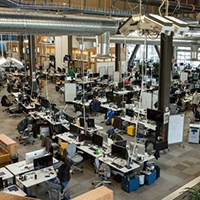 Memo to President Trump: The jobs market is alive and thriving in tech – so much so, there are 627,000 unfilled occupations.
Memo to President Trump: The jobs market is alive and thriving in tech – so much so, there are 627,000 unfilled occupations.
The booming market grew 2% to about 7.3 million workers last year as the digital economy continued to flourish in jobs for software, cybersecurity, and cloud computing, according to Cyberstates 2017, an annual analysis of the nation’s tech industry by technology association CompTIA released Monday.
The vast majority – 6.9 million – were employed by tech companies.
But many worked as technologists in other industries such as banking and healthcare, underlining the opportunity for workers with the right skills – especially outside hubs like Silicon Valley.
And the profession pays: Tech workers, on average, earned $108,900 in 2016 – more than twice the national wage of $53,040, CompTIA says.
It all adds up to about 4% of the total US workforce and a $1.3 trillion industry, about 8% of the national economy, says Tim Herbert, Senior Vice President for Research and market intelligence at CompTIA… Read More
TX Tech Sector Adds 11K+ Jobs in 2016
Excerpted from Longview News-Journal Report
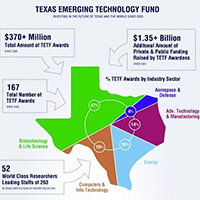 Texas technology industries added more than 11,000 jobs in 2016, according to a new analysis of the nation’s tech industry released Monday.
Texas technology industries added more than 11,000 jobs in 2016, according to a new analysis of the nation’s tech industry released Monday.
Nationwide, the booming tech market grew 2 percent to about 7.3 million workers last year as the digital economy continued to flourish in jobs for software, cybersecurity and cloud computing, according to Cyberstates 2017, an annual look at the nation’s tech industry by technology association CompTIA.
With an estimated 593,000 workers, Texas ranked second behind California for employment in the sector, the association found.
Technology occupations including all other industries in Texas reached an estimated 626,300 in 2016.
The tech sector now accounts for an estimated 7.2 percent, or $117.2 billion, of the state’s overall economy.
The annual average wage for a tech industry worker in Texas was an estimated $102,300 in 2016, 89 percent higher than the average state wage of $54,100… Read More
Distributed Computing Tooling & People Skills
Excerpted from TechTarget Report by Fred Churchville
 Whether it’s distributed computing models or the people involved in maintaining them, the message for developers is clear: If companies stretch resources too far, performance falters.
Whether it’s distributed computing models or the people involved in maintaining them, the message for developers is clear: If companies stretch resources too far, performance falters.
Avoiding this requires having the right tooling in place and considering advancements in serverless computing.
However, it also requires that software teams think hard about the notions they have about their human resources.
More and more organizations looking to hop on the cloud wagon are facing application and data integration roadblocks.
Getting around them is difficult but possible-and a step-by-step approach can help.
Such was the highlight of the Tuesday morning keynotes at the O’Reilly Software Architecture Conference in New York City.
Three keynote speakers hit upon three major angles of enterprise software management today: the caveats of new development methods, the importance of managing people and the promised benefits of serverless computing.
Here is a look at the three keynote speeches and the messages speakers wanted to send people home with… See More
Report from DCIA CEO Marty Lafferty
 The DCIA endorses a new measure advanced by the Senate Commerce Committee this week to help small and medium-sized businesses (SMBs) protect their networks and customers against cyber-attacks.
The DCIA endorses a new measure advanced by the Senate Commerce Committee this week to help small and medium-sized businesses (SMBs) protect their networks and customers against cyber-attacks.
The Making Available Information Now to Strengthen Trust and Resilience and Enhance Enterprise Technology, or MAIN STREET Cybersecurity Act, passed by voice vote on Wednesday.
Senator Brian Schatz (D-HI) introduced the bill last week, sponsored by a bipartisan group of Senators including Committee Chair John Thune (R-SD) and ranking member Bill Nelson (D-FL), along with Senators Jim Risch (R-ID), Maria Cantwell (D-WA), and Cory Gardner (R-CO).
The new bill would increase the National Institute of Standards and Technology (NIST) responsibilities for helping SMBs defend against cyber-attacks.
Specifically, MAINS STREET would direct the agency to create “clear and concise” resources to help small companies manage cyber-risks and create more cybersecurity-aware workplace cultures.
The House Science Committee passed related legislation that would task NIST with auditing civilian federal agencies’ cybersecurity protections.
Both of these measures would define an expanded role for NIST, which traditionally has been more of a standard-setting than an oversight entity within the federal government.
Allocated resources would be dependent on the size of the businesses and the nature and sensitivity of the data stored in their systems.
Share wisely, and take care.
Gartner: Cloud Services $68.4B by 2020
Excerpted from FirstPost Report by IANS
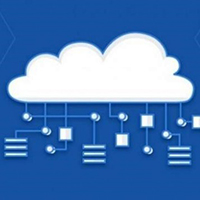
Global Cloud compute services market is expected to grow from $23.3 billion in 2016 to reach $68.4 billion in 2020 and 90 percent of organizations will adopt hybrid infrastructure management capabilities, market research firm Gartner predicted on Wednesday.
Traditional data center outsourcing (DCO) spending is expected to decline from $55.1 billion in 2016 to $45.2 billion in 2020.
“As the demand for agility and flexibility grows, organizations will shift toward more industrialized, less-tailored options,” said D.D. Mishra, Research Director at Gartner.
Spending on co-location and hosting is also expected to increase from $53.9 billion in 2016 to $74.5 billion in 2020.
In addition, infrastructure utility services (IUS) will grow from $21.3 billion in 2016 to $37 billion in 2020 and storage as a service will increase from $1.7 billion in 2016 to $2.7 billion in 2020, the findings showed.
In 2016, DCO and IUS together represented 49 percent of the $154 billion total data center services market worldwide, consisting of DCO/IUS, hosting and Cloud infrastructure as a service (IaaS)… Read More
The Cloud Is Evolving
Excerpted from KnowTechie Report by Chris Smith
 It’s no secret, the way we utilize the cloud is rapidly changing.
It’s no secret, the way we utilize the cloud is rapidly changing.
Here’s some examples of how cloud computing is transforming right before our eyes.
Not that long ago, any industry professionals claimed that cloud computing was a passing fad with little real practical value.
But how often have the experts been wrong, particularly when it comes to emerging technologies?
The growth and uptake of this type of computing have been nothing short of phenomenal, and it’s showing no signs of slowing down.
Initially, only the big players working with vast amounts of data, often at multiple locations, used the cloud.
The technology has evolved, becoming a cost-effective and practical solution for businesses of all sizes.
Most of us employ some form of cloud technology, even if it is only for storing and sharing personal information.
The early teething problems that all emerging technologies experience have, for the most part, been ironed out… Read More
Verizon Cloud Video Unit Simplifies OTT
Excerpted from Multichannel News Report by Jeff Baumgartner
 Looking to streamline and simplify video workflows for OTT providers and other digital video distributors, Verizon Digital Media Services (VMDS) has introduced an overarching “content intelligence system” under the Verizon Media Xperience Studio umbrella.
Looking to streamline and simplify video workflows for OTT providers and other digital video distributors, Verizon Digital Media Services (VMDS) has introduced an overarching “content intelligence system” under the Verizon Media Xperience Studio umbrella.
From a digital media services standpoint, the launch is the biggest on the product front since VDMS acquired and put together the technologies and systems from upLynk and CDN provider EdgeCast Networks back in 2013, according to Jason Friedlander, director of marketing communications for VDMS.
He said the new product set streamlines, integrates and aggregates data and other traditionally disparate components under the same umbrella.
Customers can use pieces of that product mix or tie them all together.
And while VDMS has traditionally worked with large media companies (ABC/Disney, Sinclair Broadcasting Group, Vice, Hearst Media Group and Verizon corporate cousin are among its announced partners), the new product set will also enable VDMS service smaller companies that have entered or plan to enter the multiscreen arena, Friedlander explained… Read More
40+ Data Centers Support Verizon Cloud
Excerpted from SDXCentral Report by Sue Marek
 A top Verizon network executive revealed some details on the company’s data center footprint to support Verizon’s telco cloud.
A top Verizon network executive revealed some details on the company’s data center footprint to support Verizon’s telco cloud.
In an interview with SDxCentral, Radhika Venkatraman, Senior Vice President and CIO of Network and Technology at Verizon, said the company plans to have 24 data centers in the US and 18 overseas.
Venkatraman added that the data centers that support the Verizon Cloud Platform (VCP) core will be very large.
Those data centers that support the VCP edge, that are principally for the edge of Verizon’s network, will be smaller and could even be co-located with Verizon’s macro network sites.
The data centers in the US will host both the telco cloud services for both enterprise customers and for Verizon’s network infrastructure.
The international sites will only host the enterprise business.
She added that Verizon will also have other data center sites, which she calls VCP lite, that will be deployed domestically and internationally… Read More
Cloud Infrastructure Trends
Excerpted from CloudTech by Aaron Shelley

The past decade has brought much change to the IT infrastructure industry as enterprise IT companies scale up their data consumption to unprecedented levels.
Today’s enterprise IT giants require far more speed, power and bandwidth to successfully run their businesses and this is only possible via enhancements to the underlying infrastructure.
Infrastructure develops so quickly that industry practices in 2020 will likely be unrecognizable from what they were 10 years ago.
Infrastructure has become more powerful, faster and more secure – and we have still only just scratched the surface of what’s possible.
This article will examine some of the current trends within the industry as it stands, as well a look at what the future holds for IaaS in 2017.
The thinking behind cloud technology can be traced back to the sixties but it has been somewhat of a late bloomer… Read More
Cloud More Attention than Cybersecurity
Excerpted from Business Journals Report by David Arnott
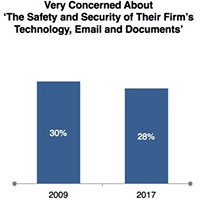
Owners of small and-mid-sized businesses are well aware of cloud computing as an emerging technology, but their concerns about cybersecurity are slightly less than how they viewed that issue eight years ago, according to newly available information compiled by a division of American City Business Journals.
Fully 84 percent of respondents to The Business Journals SMB Insights 2017 survey of business owners, executives and key decision makers said they were familiar with cloud computing.
That compares to 44 percent who said they were familiar with artificial intelligence and 65 percent who said they were familiar with 3-D printing.
At the same time, only 28 percent said they are very concerned about “the safety and security of their firm’s technology, email and documents.”
That’s a reduction from the survey results in 2009, when 30 percent of respondents said they were concerned about the issue.
It’s also a sentiment that runs counter to the potential impact for a smaller company should it suffer a data breach… Read More
Enterprise Cloud Drives Demand for IDaaS
Excerpted from FindBiometrics Report
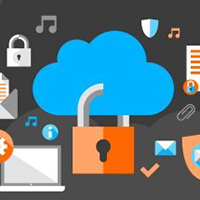 The enterprise sector’s growing use of cloud computing is driving demand for Identity as a Service (IDaaS) solutions, according to a new report from Frost & Sullivan’s TechVision unit.
The enterprise sector’s growing use of cloud computing is driving demand for Identity as a Service (IDaaS) solutions, according to a new report from Frost & Sullivan’s TechVision unit.
The firm’s new report, Technologies Empowering Future of Identity Management, argues that identity and access management (IAM) challenges “are more business-centric than technology-centric,” as it puts it in a summary.
While technological solutions for IAM are proliferating, administrative issues sometimes prevent businesses from integrating them quickly.
As TechVision Industry Analyst Swapnadeep Nayak puts it, “The shifting of enterprise solutions to the cloud has created a complex architecture that requires more advanced IAM solutions than the ones currently offered by traditional identity management vendors.”
That’s where IDaaS models offer strong solutions, allowing organizations to more easily enable secure access to cloud-based tools.
At the same time, “biometric authentication is a key area that is experiencing significant technology development,” Nayak says… Read More
Expert Tips for Managing Your Cloud Data
Excerpted from Computerworld Report by Esther Shein
 When oncologists at Carolinas HealthCare System go before a tumor board review to discuss patient cases, they are looking for feedback on treatment plans and clinical trials.
When oncologists at Carolinas HealthCare System go before a tumor board review to discuss patient cases, they are looking for feedback on treatment plans and clinical trials.
During their presentations, the doctors show their peers genetic data, pathology reports, lab results and physicians’ notes – all of which is at their fingertips because it is stored in a Hadoop cloud on Microsoft Azure.
This is the nonprofit hospital network’s first big foray into the cloud, and it has prompted careful consideration about how CHS both protects and manages its data off-premises.
The two big areas that CHS needed to tackle were networking and governance issues, says Chris Danzi, Assistant Vice President of Information and Analytics Services (IAS) at CHS.
The hospital system has more than 62,000 employees and operates 39 hospitals and 900 other care locations in the Southeast.
One difference between managing data internally and off-premises is that in the cloud, data could be housed hundreds of miles away… Read More
Net Neutrality & Data Center Services at Edge
Excerpted from SiliconANGLE Report by Bev Terrell
 As the cloud platform has matured, the perception has emerged that data centers are much more valuable if they are network neutral.
As the cloud platform has matured, the perception has emerged that data centers are much more valuable if they are network neutral.
If a customer has the ability to connect to all the clouds and all the networks, they are much more likely to sign on.
On the other hand, if a single network provider owns a data center, potential clients are less likely to use it, because they want to open access to networks and clouds.
“Equinix’s model of neutrality and how we set up exchanges and provide interconnection are the kind of things customers are looking for,” said Ihab Tarazi (pictured), Executive Vice President and Chief Technical Officer of Equinix.
Tarazi recently joined host Jeff Frick and guest host Scott Raynovich of theCUBE, SiliconANGLE Media’s mobile live streaming studio, during the Open Networking Summit in Santa Clara, CA.
In addition to discussing Equinix’s successful business model, they also covered aspects around computing on the edge.
While Equinix is nowhere close to the size of AWS, Google, or Microsoft, it is at the edge of the cloud… Read More
Watchdogs Warn of International Cyber-Attack
Excerpted from Reuters Report by John Ahlander
 A large-scale cyber-attack from a group targeting organizations in Japan, the United States, Sweden, and many other European countries through IT services providers has been uncovered, the Swedish computer security watchdog said on Wednesday.
A large-scale cyber-attack from a group targeting organizations in Japan, the United States, Sweden, and many other European countries through IT services providers has been uncovered, the Swedish computer security watchdog said on Wednesday.
The cyber-attack, uncovered through a collaboration by Britain’s National Cyber Security Center and cybersecurity firm BAE Systems, targeted managed service providers to gain access to their customers’ internal networks since at least May 2016 and potentially as early as 2014.
The exact scale of the attack, named Cloud Hopper from an organization called APT10, is not known but is believed to involve huge amounts of data, Sweden’s Civil Contingencies Agency said.
The agency did not say whether the cyber-attacks were still happening.
“The high level of digitalization in Sweden, along with the amount of services outsourced to managed service providers, means that there is great risk that several Swedish organizations are affected by the attacks,” the watchdog said.
The agency said those behind the attacks had used significant resources to identify their targets… Read More
Committee Mulls Cyber-Only Digital Service
Excerpted from NextGov Report by Mohana Ravindranath
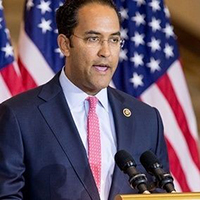 The federal government has a shortage of cybersecurity talent. Would a corps of short-term recruits, hired from the private sector, fix that gap?
The federal government has a shortage of cybersecurity talent. Would a corps of short-term recruits, hired from the private sector, fix that gap?
That’s one of the questions a House oversight committee attempted to tackle Tuesday during a hearing on federal workforce challenges. Congressman Will Hurd (R-TX) Chairman of the Information Technology Subcommittee, asked witnesses whether a model similar to tech groups 18F and the US Digital Service might work for cybersecurity.
18F, housed within the General Services Administration, is a consultancy that helps other agencies use technology and adopt principles of agile software development.
USDS troubleshoots large-scale federal tech projects; both groups recruit heavily from the private sector, including from companies such as Facebook and Twitter.
The Commerce Department’s former Chief Information Officer, Steven Cooper, described a central team of cyber experts serving 6-month to 2-year terms; those people might conduct penetration tests, deploy security badges or other short-term projects at various federal agencies… Read More
Biggest Cybersecurity Questions Answered
Excerpted by Network World Report by Gene Richardson
 Some things never change. Computer security, however, is not one of them.
Some things never change. Computer security, however, is not one of them.
New threats, patches and problems emerge each and every week.
Many of the key questions and knowledge gaps remain remarkably consistent, and the patterns become clear when you tap into a platform with tens of thousands of those questions.
That’s what Experts Exchange does.
The sum of this computer security community is a reflection on the top computer security anxieties in the world right now.
So, join me as I reveal the most commonly asked security questions.
1. How can I surf the web anonymously?
To browse the internet without fear of targeted advertising or traceable questions posted online doesn’t seem like a big ask.
As online tracking systems become more sophisticated, however, the likelihood of private, anonymous browsing is becoming a long-ago memory… Read More
Coming Events of Interest
Delivery of Things World — April 24th and 25th in Berlin, Germany. Over 400 IT executives will discuss what DevOps really means for business. This event brings together all stakeholders to share their experience and expertise.
Security of Things World — June 12th and 13th in Berlin, Germany. A world class event focused on the next information security revolution. Security concerns that preoccupy enterprise customers today and pragmatic solutions to threats.
Autonomous Systems World — June 14th and 15th in Berlin, Germany. An international knowledge exchange among top experts in the field, providing a unique glimpse into the fascinating world of autonomous robots, intelligent machines, and smart technologies.
INTRASECT — June 29th and 30th in Washington, DC. The first conference of its kind to engage key stakeholders in a comprehensive and engaging examination of existing and future regulatory policy governing the usage of commercial autonomous vehicles.
Industry of Things World Asia — July 3rd and 4th in Singapore. An international knowledge exchange platform bringing together more than 300 high-level executives who play an active role in the industrial internet of things (IoT).
Industry of Things World Europe — September 18th and 19th in Berlin, Germany. Join more than 1,000 high-level executives to rethink your technology and business strategy for scalable, secure, and efficient IoT.
